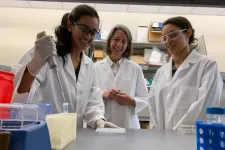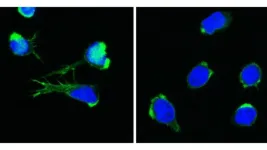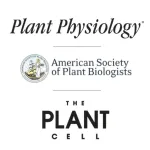(Press-News.org) As the climate changes, living things must adapt to new environmental conditions in one of two ways – either geographically or genetically. While it’s relatively simple for scientists to track and record a species’ geographic movements, proving their genetic adaptation over time can be much more difficult.
A new study led by Colorado State University researchers in Nature Climate Change is one of the first to document climate adaptation at the genomic level in a wild population. Specifically, the Southwestern Willow Flycatcher – an endangered migratory bird – has shown an increase in genetic variation associated with tolerance to wetter and more humid environmental conditions.
Sheela Turbek, a postdoctoral researcher in CSU’s Department of Biology, led this study that sequenced the genomes of the Willow Flycatcher over a 100-plus year period, comparing DNA from museum specimens from the late 1800s to modern samples taken today.
The research findings suggest that increases in genetic variation in the San Diego, California Willow Flycatcher population is allowing them to better adapt to changing climates, and that these genetic changes began as long ago as the late 1800s.
Climate adaptation on a genetic level
Turbek hypothesized that the changing climate in San Diego, California, where weather conditions have gotten wetter and more humid over time, would lead to genetic shifts in wild populations.
“We used over 200 contemporary samples from the Willow Flycatcher to scan the genetic material for specific regions of the genome associated with important environmental variables,” said Turbek. “This includes things like monthly precipitation and monthly maximum temperature. Once we identified the regions of the DNA we think are involved in climate adaptation, we extracted the genetic information from those regions in both our historical and our modern San Diego samples.”
Her groundbreaking work revealed that there has been an increase in genetic variation in Willow Flycatchers from past to present, and that genetic regions associated with humidity and precipitation in Willow Flycatchers have both shifted in a direction that is consistent with climate adaptation.
Proving genetic adaptation over time
Turbek, who is a part of Kristen Ruegg’s lab at CSU, picked up this research after Ruegg and collaborators had been working on a similar project for around 10 years. The technology needed to sequence whole genomes advanced significantly over the 2010s, making this work possible today.
Turbek focused on the Southwestern Willow Flycatcher because of its endangered status. Ruegg’s foundation of preliminary research showed the birds had locally adapted to different climate conditions across space.
“The Willow Flycatcher is made up of four different subspecies, and the subspecies in the southwest has faced really precipitous population declines and was listed as federally endangered in 1995,” said Turbek. “So, there’s a lot of interest from government agencies to effectively manage this subspecies and save it from climate induced extinction, which is something that Kristen has demonstrated it could potentially suffer from in the future.”
To prove genetic adaptation over time is much more complicated.
Decades-old samples often contain degraded, contaminated or low-yield DNA, which is why, until now, it has been difficult to prove genetic adaptation to an appropriate degree of certainty.
“Museums will send us a little clipping from a toe pad that often has really low DNA concentrations so it’s hard to acquire enough reads of the DNA to have a good idea of what the genetic code looks like,” said Turbek.
After the years-long effort of sequencing the historical genome, and comparing the historical results to modern samples, the researchers determined that the Willow Flycatcher had seen an increase in genetic variation over time.
“We think that it was actually mixing or gene flow into the population from neighboring populations that helped recover the gene pool of the Willow Flycatchers in the San Diego area,” said Ruegg.
Validating predictions of climate change effects
Turbek and Ruegg are excited to be able to validate scientists’ predictions of how some species will adapt to climate change.
“Human-induced climate change is really having a drastic effect on the reproductive activities of many species, and it is going to drive a lot of organisms to the brink of extinction,” said Turbek. “So, the fact that we can document this amount of adaptation over a century-long time scale is somewhat encouraging in that these birds seem to be responding to the amount of climate change that has already occurred. It can help us better predict what’s going to happen in the future, and how species might respond.”
Other essential collaborators include: Christen Bossu, Christine Rayne, Christian Gruppi, Barbara Kus, Mary Whitfield, Thomas Smith, Eben Paxton, Rachael Bay and Kristen Ruegg.
END
CSU biologists document genome-level climate adaptation in endangered bird species
2023-06-21
ELSE PRESS RELEASES FROM THIS DATE:
DNA test could broaden access to cervical cancer screening
2023-06-21
HOUSTON – (June 21, 2023) – Rice University bioengineers have demonstrated a low-cost, point-of-care DNA test for HPV infections that could make cervical cancer screening more accessible in low- and middle-income countries where the disease kills more than 300,000 women each year.
HPV, a family of viruses, infects nearly everyone at some point in their lives, often without symptoms. But more than a dozen types of HPV can cause persistent infections that result in cervical cancer, which is preventable and curable ...
Cancer drugs show potential in fight against malaria
2023-06-21
With malaria becoming increasingly drug-resistant, a team of UCF researchers is looking to use cancer drugs to accelerate the discovery of new life-saving therapies for the disease.
In a study funded by a 5-year $3.8 million grant from the National Institutes of Health, UCF molecular parasitologist Debopam Chakrabarti and cancer molecular biologist Ratna Chakrabarti are partnering with Nathanael Gray, co-leader of the cancer therapeutics research program at Stanford University and Elizabeth Winzeler, a malaria drug development expert from the University of California San Diego, to test cancer drugs for malaria-fighting ...
Newly discovered genetic defect disrupts blood formation and immune system
2023-06-21
(Vienna, 21.06.2023) In the quest to find the origin of the puzzling symptoms in four children, researchers from St. Anna Children's Cancer Research Institute, the CeMM Research Center for Molecular Medicine of the Austrian Academy of Sciences (ÖAW), and the Medical University of Vienna have discovered a completely new disease, linking disruptions of blood formation, the immune system, and inflammation. This groundbreaking discovery provides the basis for a better understanding of similar diseases. It is a milestone that the researchers have now published ...
New study reveals number and strength of head impacts, not concussions, drive CTE risk in football
2023-06-21
Does a football player’s number of concussions drive the risk of developing chronic traumatic encephalopathy (CTE)? In a new study of 631 deceased football players, the largest CTE study to date, scientists found that the number of diagnosed concussions alone was not associated with CTE risk. Instead, football players’ odds of developing CTE were related to both how many head impacts they received and how hard the head impacts were.
The study, conducted by researchers at Mass General Brigham, Harvard Medical School, and Boston University (BU), was published today in Nature Communications. It ...
ASPB Journals launch Author Travel Awards
2023-06-21
ROCKVILLE, MD - Authors whose work has been published in Plant Physiology or The Plant Cell, leading international society journals published by the American Society of Plant Biologists (ASPB), have a new option to support their travel to share their research with the scientific community. Funded by Plant Physiology and The Plant Cell, US$1,000 travel awards will be awarded to authors who have received invitations to give an oral presentation at any conference or scientific meeting around the world. Five US$1,000 awards are available in 2023 with more awards anticipated for 2024 ...
Scientists discover mechanism affecting heart development in Down syndrome
2023-06-21
Infants born with Down syndrome, the genetic condition caused by an extra copy of chromosome 21, or trisomy 21, are highly predisposed to congenital heart defects. It is estimated that nearly half of newborns with Down syndrome have a congenital heart malformation, and Down syndrome is recognized as the most common cause of congenital heart abnormalities. Despite many research efforts over several decades, the mechanisms by which trisomy 21 prevents proper formation of the heart during embryonic development have remained unknown.
A recent study by scientists ...
Combining twistronics with spintronics could be the next giant leap in quantum electronics
2023-06-21
Twistronics isn’t a new dance move, exercise equipment, or new music fad. No, it’s much cooler than any of that. It is an exciting new development in quantum physics and material science where van der Waals materials are stacked on top of each other in layers, like sheets of paper in a ream that can easily twist and rotate while remaining flat, and quantum physicists have used these stacks to discover intriguing quantum phenomena.
Adding the concept of quantum spin with twisted double bilayers of an antiferromagnet, it is possible to have tunable moiré magnetism. This suggests a new class of material platform for the next step in twistronics: ...
Omega-3 fatty acids linked to slower decline in ALS
2023-06-21
EMBARGOED FOR RELEASE UNTIL 4 P.M. ET, WEDNESDAY, JUNE 21, 2023
MINNEAPOLIS - People with amyotrophic lateral sclerosis (ALS) who eat more foods high in certain omega-3 fatty acids like flaxseed oil, walnuts, canola oil and pumpkin seeds may have a slower physical decline from the disease and may have a slightly extended survival. The study, which looked at the survival of people with ALS over the course of 18 months, was published in the June 21, 2023, online issue of Neurology®, the medical journal of the American Academy of Neurology. Researchers also found an omega-6 ...
Is TBI a chronic condition?
2023-06-21
EMBARGOED FOR RELEASE UNTIL 4 P.M. ET, WEDNESDAY, JUNE 21, 2023
MINNEAPOLIS – People with TBI may continue to improve or decline years after their injury, making it a more chronic illness, according to a study published in the June 21, 2023, online issue of Neurology®, the medical journal of the American Academy of Neurology.
“Our results dispute the notion that TBI is a one-time event with a stagnant outcome after a short period of recovery,” said study author Benjamin L. Brett, PhD, of the Medical College ...
Omega-3 fatty acids linked with slower progression of ALS
2023-06-21
Key points:
In an 18-month study, people living with ALS who had higher levels of omega-3 fatty acids in their blood were found to have slower decline in physical functionality and lower risk of premature death compared to those with lower levels of omega-3 fatty acids.
Alpha-linolenic acid (ALA)—an omega-3 fatty acid found in many nuts, seeds, and oils—showed the strongest link to slower disease progression. Those with higher levels of ALA had a 50% lower risk of dying during the study period compared to those with lower levels of ALA.
Embargoed for release: Wednesday, June 21, 2023, 4:00 PM ET
Boston, MA—Consuming omega-3 fatty acids—particularly ...



